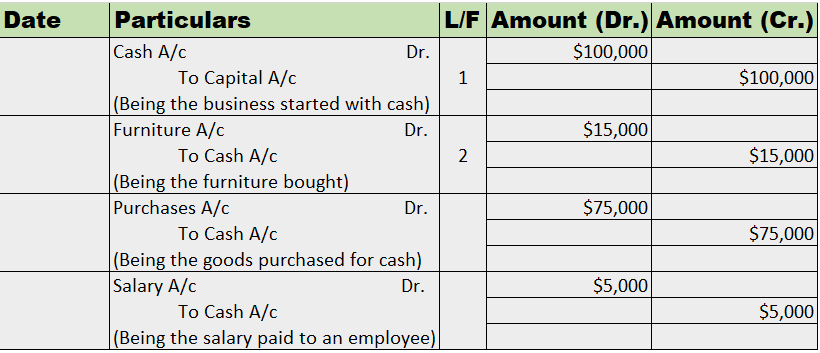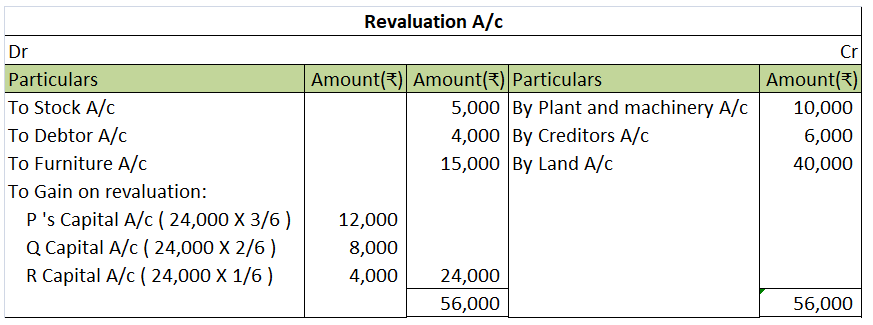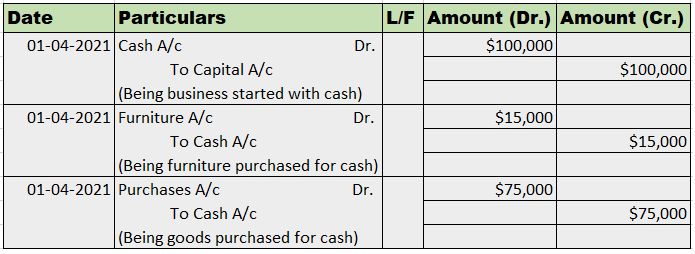A. Furniture B. Capital C. Sales D. Commission earned
An asset is an item of property owned by a company/business. It may be for a longer or shorter period of time. Assets are classified into two broad heads: Non-Current Assets Current Assets The asset may be sold for several reasons such as: An asset is fully depreciated. It should be sold becaRead more
An asset is an item of property owned by a company/business. It may be for a longer or shorter period of time. Assets are classified into two broad heads:
- Non-Current Assets
- Current Assets
The asset may be sold for several reasons such as:
- An asset is fully depreciated.
- It should be sold because it is no longer needed.
- It is removed from the books due to unforeseen circumstances.
The journal entry for profit on the sale of assets will be:
| Cash / Bank A/c | Debit |
| To Asset A/c | Credit |
| To Profit on Sale of Asset A/c | Credit |
| (Being sale of an asset made with a gain) |
According to the golden rules of accounting, in the above entry “Cash/Bank A/c” it is a Real Account and the rule says “Debit what comes in” and so is debited.
“Asset A/c” is a real account and the rule says “Credit what goes out” and so is credited. Any Gain on sale of an asset goes to the Nominal account and according to the rule “Credit, all incomes and gains” and so is credited.
The journal entry for loss on sale of the asset will be:
| Cash / Bank A/c | Debit |
| Loss on Sale of Asset A/c | Debit |
| To Asset A/c | Credit |
| (Being sale of an asset made and loss incurred) |
In the above entry, “Loss on Sale of Asset” is debited because according to Nominal account rules “Debit all losses and expenses” and so is debited.
According to modern rules of accounting, “Debit entry” increases assets and expenses, and decreases liability and revenue, a “Credit entry” increases liability and revenue, and decreases assets and expenses.
| Cash / Bank A/c | Debit | Increases Asset |
| Loss on Sale of Asset A/c | Debit | Increases Expenses |
| To Asset A/c | Credit | Decreases Asset |
| To Profit on Sale of Asset A/c | Credit | Increases Expenses |
For example, Mr. A sold furniture for $2,500 and incurred a loss on the sale which amounted to $2,500.
According to modern rules, the journal entry will be:
| Particulars | Amt | Amt | |
| Cash / Bank A/c | 2,500 | Increase in asset | |
| Loss on Sale of Asset A/c | 2,500 | Increase in expenses | |
| To Asset A/c | 5,000 | Decrease in asset | |
| (Being sale of an asset made and loss incurred) |
















Definition Where the total of the debit side is more than the credit side therefore the difference is the debit balance and is placed credit side as “ by balance c/d “ A furniture account that is an asset has a debit balance. Debit balance may arise due to timing differences in which case income wilRead more
Definition
Where the total of the debit side is more than the credit side therefore the difference is the debit balance and is placed credit side as “ by balance c/d “
A furniture account that is an asset has a debit balance.
Debit balance may arise due to timing differences in which case income will be accrued at the year’s end to offset the debit.
The amount is shown in the record of a company s finances, by which its total debits are greater than its total credits.
The account which has debit balances are as follows:
Land, furniture, building machinery, etc
Salary, rent, insurance, etc
Bad debts, loss by fire, etc
Personal drawings of cash or assets
Balances of these accounts
The account has credit balances as follows:
Creditors, bills payable, etc
Salary received, interest received, etc
Dividends, interest, etc
Partners Capital
Here are some examples showing the debit balances and credit balances of the accounts :

See less